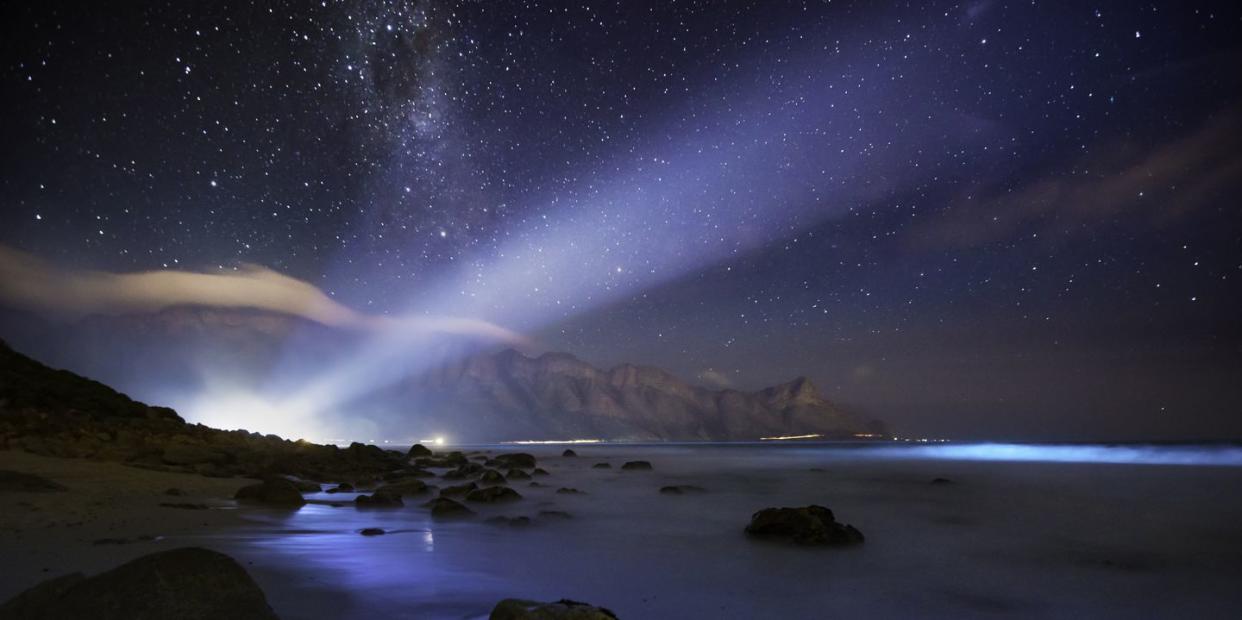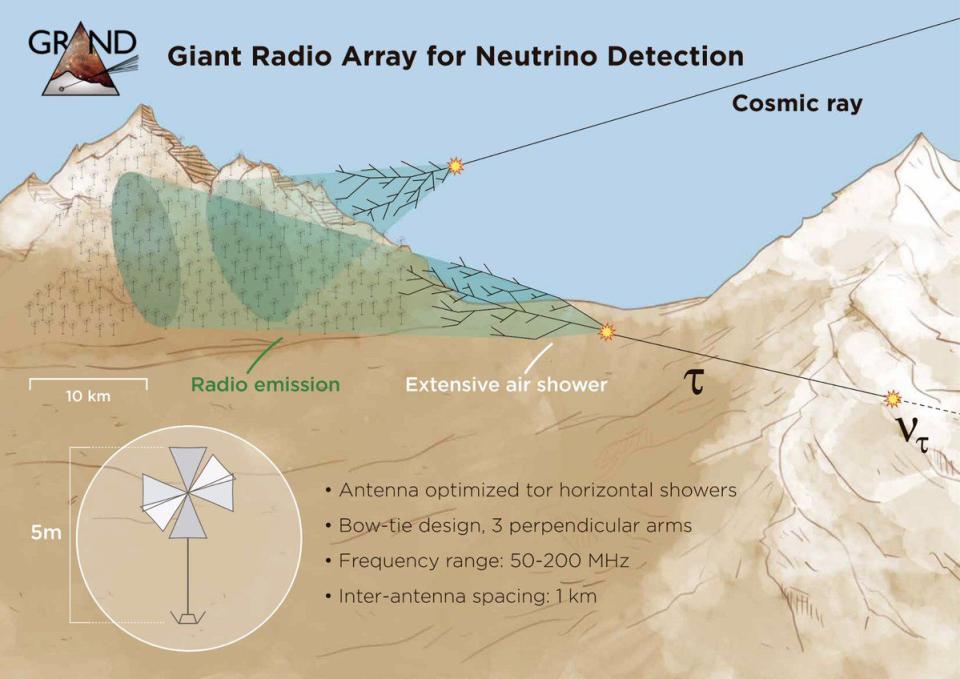Scientists Want to Build a Telescope the Size of Nebraska

When it comes to telescopes, unless you're a pirate trying to fit your spyglass back in your shirt after spotting land, bigger is always better. A larger telescope means more collected light, which means better resolution and the ability to see fainter and further objects. For most telescopes, though, even a slightly bigger size means an exponentially larger cost. But that's not the case with radio telescopes, which collect radio light waves instead of visible light. That's why astronomers are proposing to build a new radio telescope roughly the size of Nebraska.
Radio telescopes can scale so easily because radio waves are long enough that several separate antennas can add up to one telescope. Many of the largest radio telescopes, such as the Very Large Array in New Mexico and the Atacama Large Millimeter Array in Chile, are made of dozens of smaller dishes and antennas that combine to create a very large effective telescope size.
This massive new telescope, called the Giant Radio Array for Neutrino Detection (GRAND), will make those look cute. GRAND's large scale will allow it to hunt for high-energy cosmic particles, which, if found, could help us learn more about the biggest galaxies in the universe-and the early stages of the universe itself.
GRAND is in search of neutrinos, exotic particles emitted by stars like our sun and the black holes in the center of galaxies. These neutrinos will help astronomers find what they're really after: the source of other energetic particles called ultra-high-energy cosmic rays.
The most energetic particles likely originated in the most powerful galaxies in the early universe, where ‘blazars’ emitted cosmic rays millions of times stronger than those produced by our sun. The problem with tracking these rays is that, on their way across the universe, they tend to get knocked around by magnetic fields and other particles.
Neutrinos don't have that problem. Created alongside these high-energy particles, they will frequently travel right through an entire planet without the slightest modification in trajectory. So if you can follow the path of the neutrino, you can surmise the path of the cosmic rays. Which is exactly what GRAND is designed to do.
When neutrinos reach the Earth, they often collide with particles either in the air or on the ground, creating showers of secondary particles. These secondary particles can be picked up by the radio antennas, which lets researchers calculate the trajectory of the initial neutrinos and trace them back to their source.

To maximize the efficiency of the radio antennas, researchers plan to place them in mountain valleys, where the neutrinos have the highest chance of colliding both with the air and the ground before reaching the antennas. Plus, they plan to build a lot of them. Nearly 80,000 square miles, to be exact.
The antennas will be built in groups of around 10,000. With some luck, the GRAND experiment will start detecting neutrinos by 2025, when the first antenna batch is completed in a mountain range in China. The full configuration is expected to be finished sometime in the 2030s, when 200,000 antennas would be operational in remote mountain ranges around the world. And if that's not enough, they can always add more.
('You Might Also Like',)

